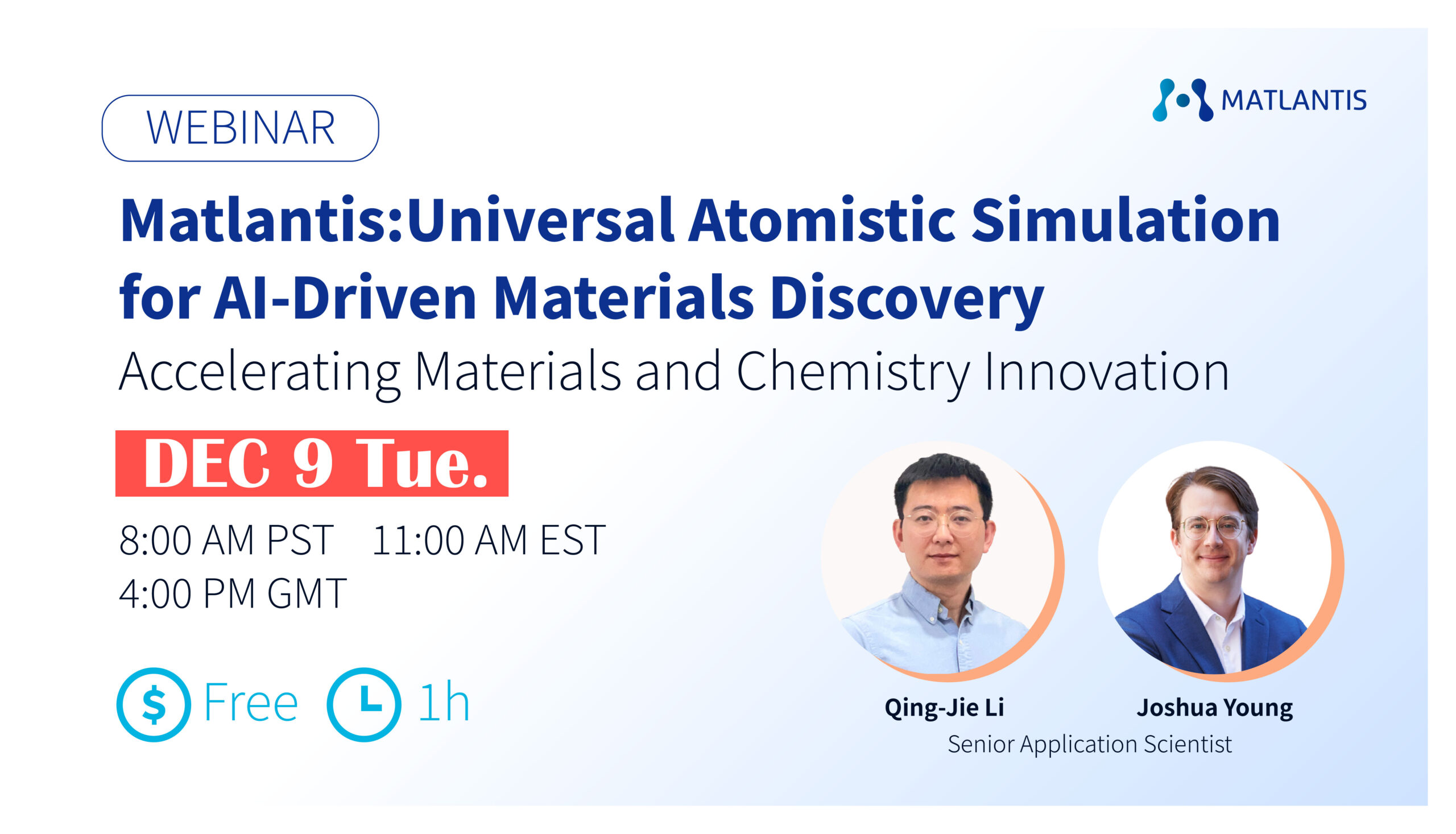Event Report
User Community
Tokyo Conference Center, Shinagawa2025.10.8 (JPN)
A day where Matlantis users gather - Report on the "Matlantis User Conference 2025" held on October 8th
On October 8, 2025, we held the "Matlantis User Conference 2025," bringing together Matlantis users from companies and academia.
We will bring you a report on the day, which was a huge success with a wide range of content, including a poster session with over 50 posters.
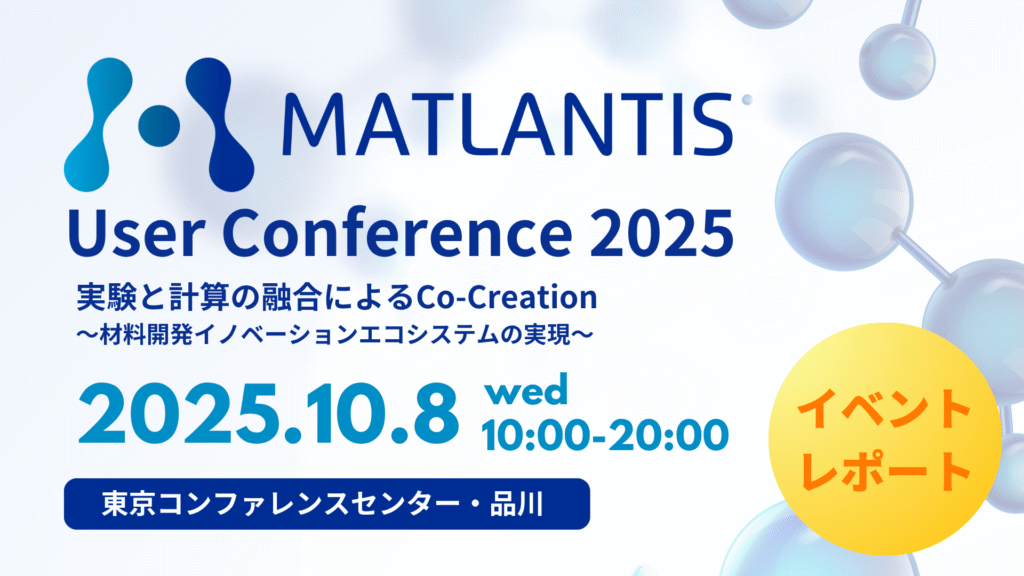
To the site of "Co-Creation" where experiments and calculations intersect
This year's theme was "Co-Creation through the Integration of Experiment and Computation :Realizing an Innovation Ecosystem for Materials Development." Over 300 participants, including corporate researchers and members of universities and research institutes who use Matlantis, gathered at a venue in Shinagawa, Tokyo, to share their research results and the evolution of their development processes.
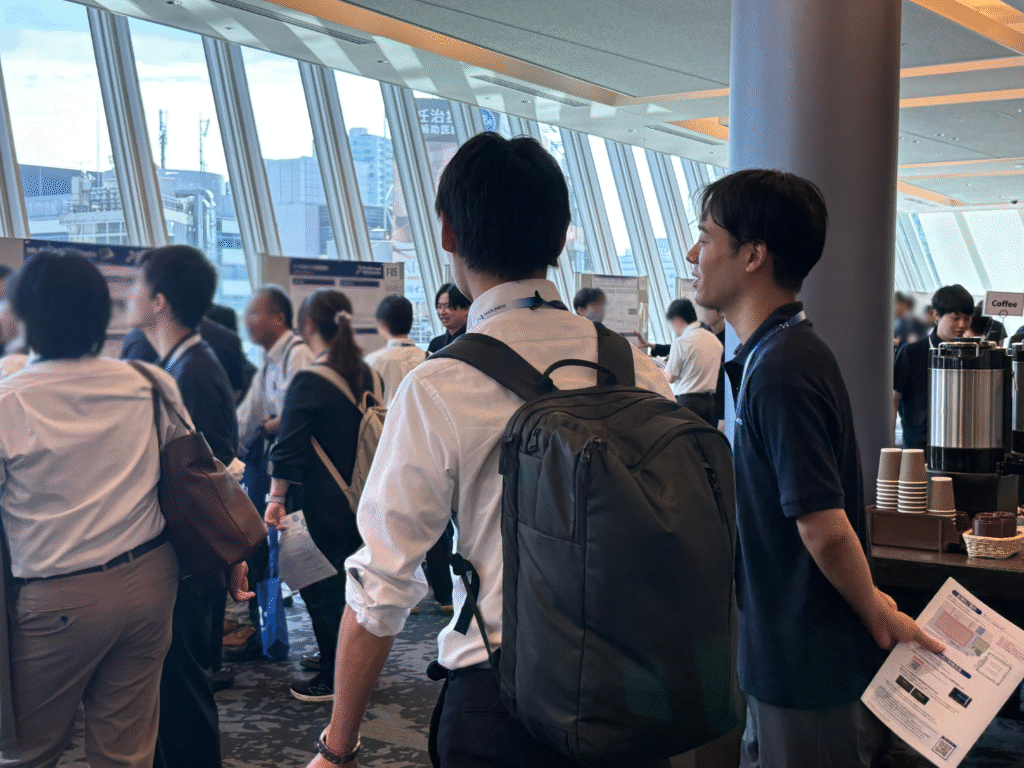
Over 50 poster sessions generated excitement
The poster session, which began at 10:00 a.m., featured over 50 poster presentations from companies and academia, and the venue was bustling with visitors from the moment it began.
The themes were diverse, including reaction mechanism analysis, catalyst design, materials exploration, and simulation speedup, and in front of each poster, presenters and audience members, as well as audience members themselves, could be seen actively exchanging opinions, transcending the boundaries between industry and academia. Presenters, audience members, and audience members themselves brought together their knowledge and perspectives, and lively dialogue was seen everywhere, leading to the "co-creation" of new ideas.
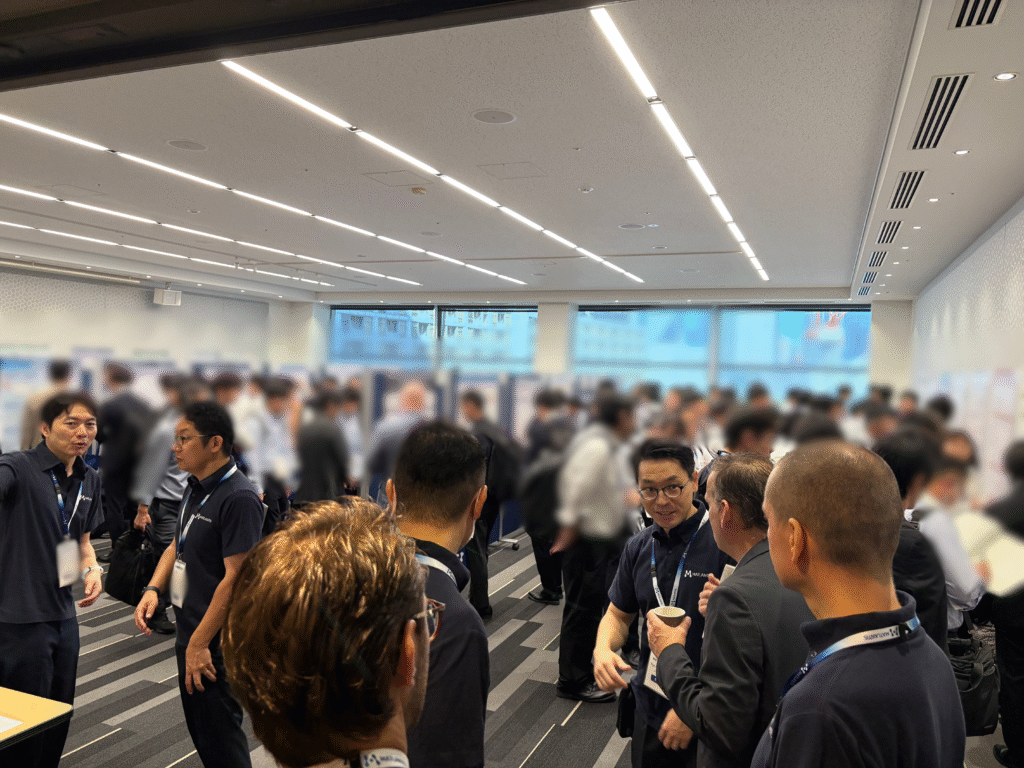
The heat was so intense that electric fans had to be quickly installed at the venue, even though it was already October.
Deepening of "integration" seen in user sessions
In the afternoon, the venue moved to the hall for the lecture session. Daisuke Okanohara, CEO Matlantis Corporation, took the stage and spoke about Matlantis' strengths and market positioning, taking into account the current situation surrounding research and development and trends both in Japan and overseas, as well as the future direction of R&D that the company aims to take by combining AI and computational science.
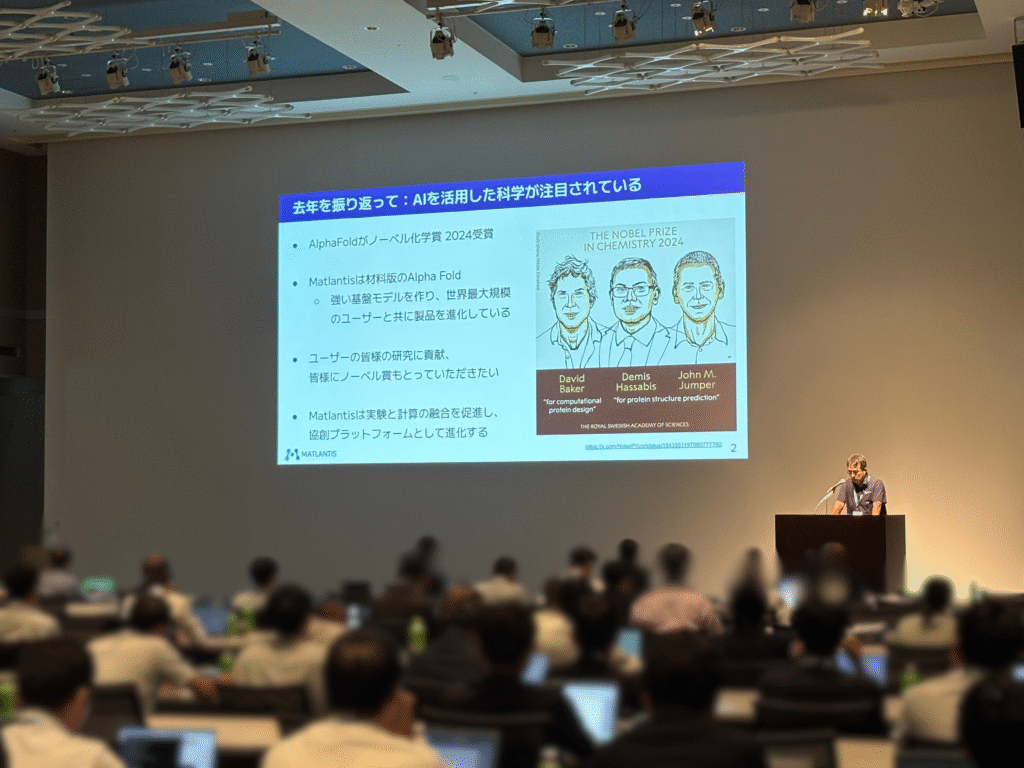
This was followed by presentations by users from Japan and abroad.
AkzoNobel Coatings Dr. P. Koeckhoven (Pim) & Dr. J. Heinen (Jurn)
Computational researcher Jurn gave a presentation on his approach combining experiments and calculations to explore chromate-free corrosion inhibitors in the coatings industry, where demands for sustainability are increasing.
Using Matlantis, they were able to broadly screen chemical spaces that were difficult to explore using conventional methods, and then experimentally validate promising candidates. This was an impressive example of how AI can accelerate materials discovery.
Shimogaki Laboratory, University of Tokyo
Two presentations were given by the Shimogaki Laboratory at the University of Tokyo, which is at the forefront of semiconductor manufacturing processes.
Noboru Sato
He spoke about the use of Matlantis for surface reaction analysis of ALD (atomic layer deposition) reactions, which are important in semiconductor processing. He verified the accuracy by comparing reaction probabilities with experimental values and visualized the surface reaction behavior of Co complexes. This presentation expanded the possibilities of using computational methods in ALD process design.
Naoki Tamaoki
He introduced a study that combined in-situ reflected light observation and Matlantis simulation to target the early growth stage of the ALD process.
He deepened his understanding at the elementary reaction level, such as adsorption and desorption, and quantitatively analyzed the phenomena occurring in the early stages of film formation. His presentation left a strong impression with its approach of elucidating the film formation mechanism through both experiments and calculations.
Tatsushi Saito, Resonac Inc.
He spoke about the process of introducing Matlantis at Resonac and examples of its use in research. He explained that by introducing Matlantis, they have created a system where experimental researchers can perform computational analysis, enabling materials development that utilizes practitioners' domain knowledge and computational insights. His presentation was impressive, highlighting the practical benefits of the introduction and efforts to improve the research capabilities of the entire organization.
Masaki Okoshi , Panasonic Holdings Corporation
He introduced Panasonic's digital transformation efforts in materials and device development, as well as examples of Matlantis usage. He introduced a variety of use cases that take advantage of the versatility and robustness of PFP (Preferred Potential). He explained that they are working to establish Matlantis and build an internal ecosystem, and are in the phase of creating business value through actual development as a tool for everyday use that complements experiments.
The presentation conveyed practical results and the reality of development transformation through DX.
Michihisa Koyama, Shinshu University
By combining the high accuracy of first-principles calculations with the high speed of machine learning, we have achieved analysis that incorporates the complex structure of supported metal catalysts.
By showing examples of simulations that can be directly compared with experimental measurement results, the content gave a real sense of how computational materials science is evolving from theory to application.
All sessions were filled with questions and answers until the end of the allotted time, and each presentation gave the impression of a new trend in research that transcends the boundaries between experiments and calculations, moving back and forth between the two.
A place where connections beyond affiliation can be made
Many people also attended the social gathering that followed the lectures. Speakers and participants interacted across the boundaries of their fields and affiliations, and lively discussions and information exchanges took place throughout the venue.
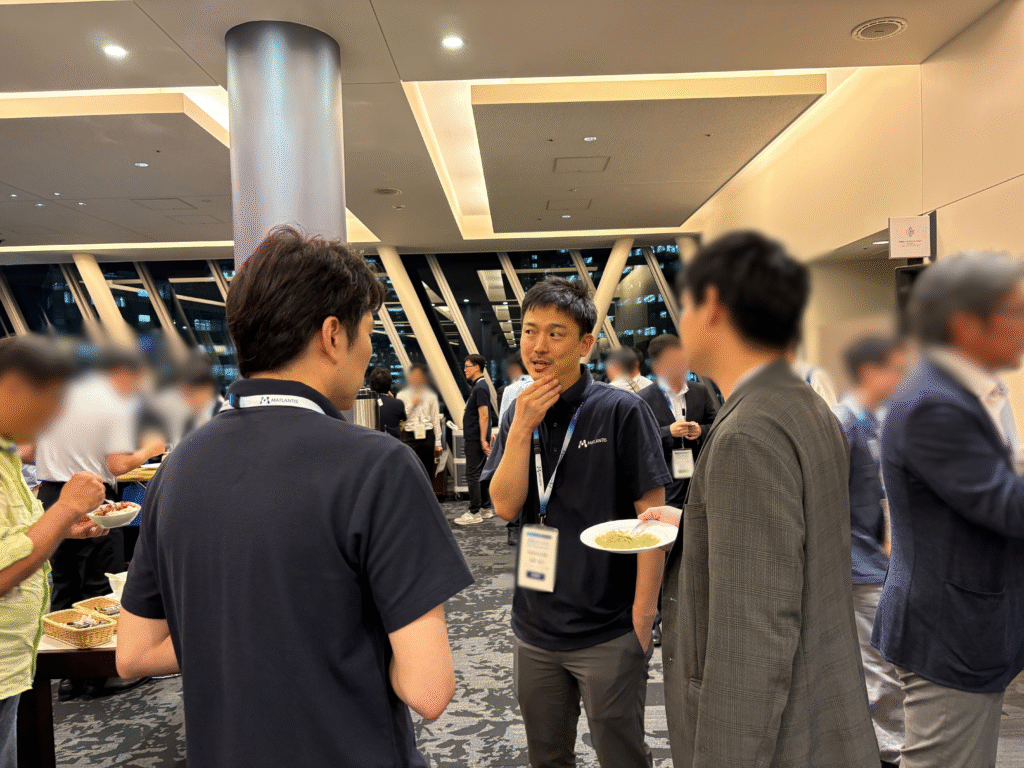
"Since we started using Matlantis, more people have been exposed to simulation."
"How can we come closer to the experiment?"
We heard many comments like these, which gave us a sense of the new potential of research.
The entire venue was filled with excitement and energy, embodying the meaning of the word "Co-Creation."
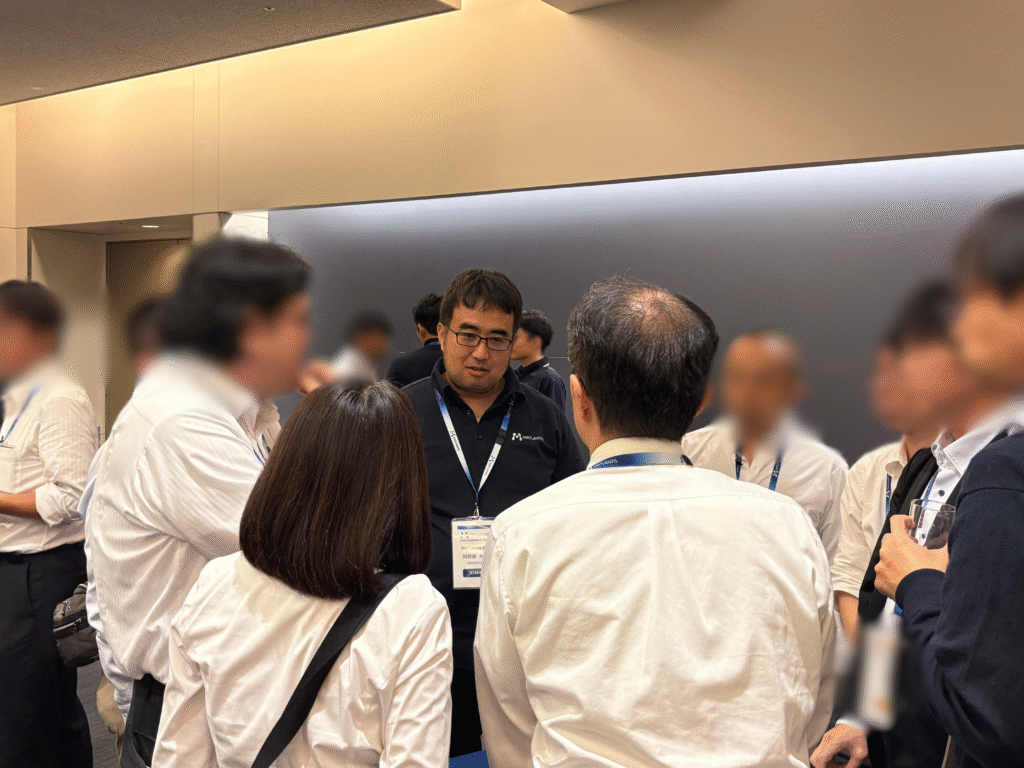
We hope that this event provided participants with an opportunity to get a feel for the future of materials science. We will continue to provide opportunities for users to interact and share information like this in the future, so if you were unable to attend this time, we at Matlantis look forward to seeing you again at the next opportunity.
We will continue to work with many companies and research institutions to create innovative materials and contribute to the realization of a sustainable society. Thank you to everyone who participated in the Matlantis User Conference 2025.
公開日:2025.10.14


